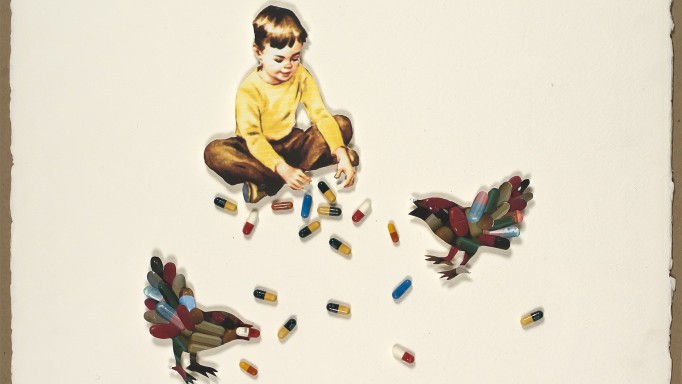Write a Comment
13 Comments
Let me express my gratitude to David Evans, Ernest Hopkins, John S. James and Jeton Ademaj for their honest, balanced, well-reasoned and important contributions to this discussion. Wild-eyed statistical manipulations driven by anger at drug companies and homophobic, sexphobic rants from our "leaders" and "allies" only threaten to perpetuate and widen this epidemic. Perhaps they just want to keep their jobs.
Truvada is currently available to be prescribed for "off label" use by a doctor who feels their HIV negative - patient would benefit.
I do indeed agree with John James on many other issues. George Carter brings up an issue that seems to have been missing in every report and comment on PrEP trial results. The absolute risk reduction achieved by PrEP is never mentioned. I took another look at the iPrEx paper in the NEJM and I couldn't find the absolute risk reduction reported, nor the number needed to treat in order to prevent one infection. Only relative risk reduction is reported. It's the oldest trick used by advertisers and sadly even in some clinical trial reports to make results seem more impressive than they really are. That is to only report relative risk reduction and remain silent about absolute risk reduction. From the numbers in the iPrEx trial report it's possible to work out the absolute risk reduction. 5.1% of the placebo group were infected vs 2.8% in the PrEP arm. The absolute risk reduction is not nearly as impressive as the relative risk reduction - which isn't itself that impressive. The number needed to treat to prevent one infection is 1/absolute risk reduction. In order to prevent one infection about 43 people would need to be treated. I don’t think I made a mistake, but anyone can check. It's not only the cost of Truvada that's involved. People will need to be monitored for toxicity, and importantly, to detect infection because continuing suboptimal treatment will surely result in resistant virus. You can probably estimate what it will cost to prevent one infection with PrEP.
Welcome, David...bravo to you for your well-reasoned rebuttal, and for sparking this especially revelatory back and forth on the real issues raised by PrEP. I am particularly intrigued by the possibility that PrEP could greatly mitigate the bloom of new infections spread by newly infected (and thus most highly infectious) persons participating in very active sexual networks. i remain surprised at all the sexual anxiety endemic throughout the HIV-activist community, continually manifesting under various guises. David might have gone that final, controversial step in describing the divisions in the POZ community: the slutty versus the non-slutty, and the formerly-slutty. i do recall Regan Hoffman posting a blog asking/demanding that all HIV+ people should not be seen as/presumed to be "one of those people". you know, "those" less-than-virtuous people that Jesse Helms helped us all to see, and wag our fingers at.
I hate to argue against some good points by Dr. Sonnabend and by George Carter -- we agree on so much more. But PrEP is important enough to explore all the angles, to be as sure as we can about getting it right. "Intent to treat" reporting of clinical trials -- meaning that you count results from everyone randomized to take the treatment, whether they actually took it or not -- is the most conservative (meaning that it usually makes a new treatment look least good). That doesn't mean it's always the best headline to report to the public. Yes, separately analyzing the volunteers who do well in a trial, who "respond" to a treatment (volunteers selected after you see the results) is unreliable. But that rule doesn't exclude "as treated" analysis (tabulating results only from those who actually took the treatment), which is common and totally accepted in clinical trials. Here, the data used for selection after randomization was the blood test to show who was taking the drug as directed and who was not. And EVERYONE in the Truvada arm who got HIV was not taking the pills as directed. In this case, "intent to treat" gives us the 44%-effective headline, and "as treated" says over 90% effective (well over 90%, I would argue). Both are correct. When they are so very different, we need to investigate what actually happened. In this case (the iPrEx trial), the adherence at the two U.S. sites, in Boston and San Francisco, was close to 100% by drug-level testing -- very different from adherence at non-U.S. sites (closer to 50%, depending greatly on how you measure it -- usually the drug levels from those who did not get HIV were not tested, at least not yet). My personal guess: the key difference is that there is no underground market or other distribution channel for approved AIDS drugs in Boston and San Francisco, while there is in much of the world. Regardless of whether or not this guess is correct, or other causes were more important, the U.S. experience does show that adherence (almost everyone in the group taking one Truvada pill once a day) is possible. Much of the reason for "intent to treat" is that if a drug works when taken, but is so hard to take that few patients will use it, than that drug should not be counted as highly effective. But that's not the situation here, in the U.S. sites at least. What counts for prevention planning is that very high group adherence and therefore very good protection IS POSSIBLE when conditions are right. When doing prevention, we will have to work on consistently getting them right. PS: Gilead Far from salivating at potential PrEP profits, Gilead has been surprisingly reluctant on its drugs being used for PrEP -- ever since tenofovir looked good for prevention, in animal studies well over 10 years ago. Take a closer look, and you will see why. I suspect that widespread PrEP use of its products (in the U.S. at least) could be an almost existential threat to Gilead -- and even to other pharmaceutical companies as well. Gilead's price for Truvada is about $13,000 per year retail. That's what the treatment market will bear (and basically all AIDS drugs in the U.S. are priced at what the market will bear -- which maximizes corporate profits, while not counting at all the social costs of many thousands of people left untreated solely because of the price). But for PrEP, it's hard to see the market bearing a tenth of that price -- same drug, same dose, different people (who are not facing death, often don't think AIDS is their problem, and usually don't like to think about it period). So it's hard to see how PrEP could happen on any scale in the U.S., if the high treatment price is maintained. The two may be simply incompatible. And the U.S. financial crises, driven in large part by medical profiteering, are getting bad enough that even Congress might someday consider some drug price restraints, like other industrialized countries. Just possibly the social costs of millions untreated for AIDS, cancer, and many more serious illnesses might come to balance or even outweigh the personal costs of lost campaign contributions, career opportunities, and other big favors delivered to powerful legislators by rich corporations. This is why industry fears PrEP and won't push it; their sky-high treatment pricing, already at some risk, could butt heads again with public health, at a critical time. If activists also don't support PrEP, then how many people will? We could lose important opportunities to end the epidemic. That's why we need to get this right.
A question: what is the incidence rate in Kenya and Uganda? How does that compare to the incidence seen in this study? Are they equivalent? If the incidence rate in the study in both arms is less than the background incidence of the general population, it means the overall intervention of frequent clinic visits, reminders, "selection bias" of being a trials participant and other factors all figure in to the outcome. Here - http://www.avert.org/africa-hiv-aids-statistics.htm Kenya - 6.3% incidence. According to http://www.aidsmeds.com/articles/hiv_prep_truvada_2636_20846.shtml In the Partners Prep study, 4,758 patients 78 total infections or an incidence OVERALL of what? 1.6%? This means the program ITSELF helped bring down the incidence dramatically. The ABSOLUTE risk produced by either tenofovir alone or the combination is really rather marginal for a very costly, toxic drug. Again--I say THIS form of PrEP is more hype than hope.
This is a good article, and John, you clarify the essential feature of THIS form (tenofovir/emtricitabine) of PrEP: it only works with extremely high adherence. And therein lies the rub. A "responder analysis" can be informative but it can also be misleading (which is why "intent-to-treat" is a more rigorous and accurate approach). The 42% figure from iprex may more accurately reflect real world outcomes--IF the approach is considered "generalizable" to at-risk populations. And indeed, it may well be that it fares worse among the at-risk population as they do not have the kind of intensive relationship with a clinic to make it practical as was available to trial participants. This and the limited funds available for prevention and treatment programs as they exist now deeply concerns me. As a marginally useful tool in the prevention toolkit, this form of PrEP runs the risk of trying to "medicalize" (i.e., here's your pill, good-bye we're busy) prevention, reducing funds for paying the people we need to do counseling, and the funds needed for testing, syringe access, for free condoms and safe lube and public programs to help reduce stigma and discrimination. Finally and foremost, I find it astonishing and despicable that all these trials in developing nations are being done given the severely unlikely eventuality that this form of prep will be available to those people, especially in light of the fact that least 10 million (more if you raise the CD4 count cutoff) HIV+ are CLINICALLY eligible for ARV and they are not receiving treatment. Regan's comment rings all the more true: this is just a cynical ploy by Gilead to corner the western market at $12,000/pt/year and heck, whatever they can suck up from Africa, in typical "Confessions of an Economic Hit Man" style. To the extent this form of PrEP is available to the small population of HIV-negative at-risk people who are also willing and able to sustain the high level of adherence (and the high cost), it is a tool for prevention....that may well take treating 45 people to prevent one infection. Thus, a minor tool hardly worth all the hoopla it is being accorded.










Andrew
I highly doubt Hoffman is trying to "keep her job" by questioning the drug companies who write checks to POZ.
July 31, 2011